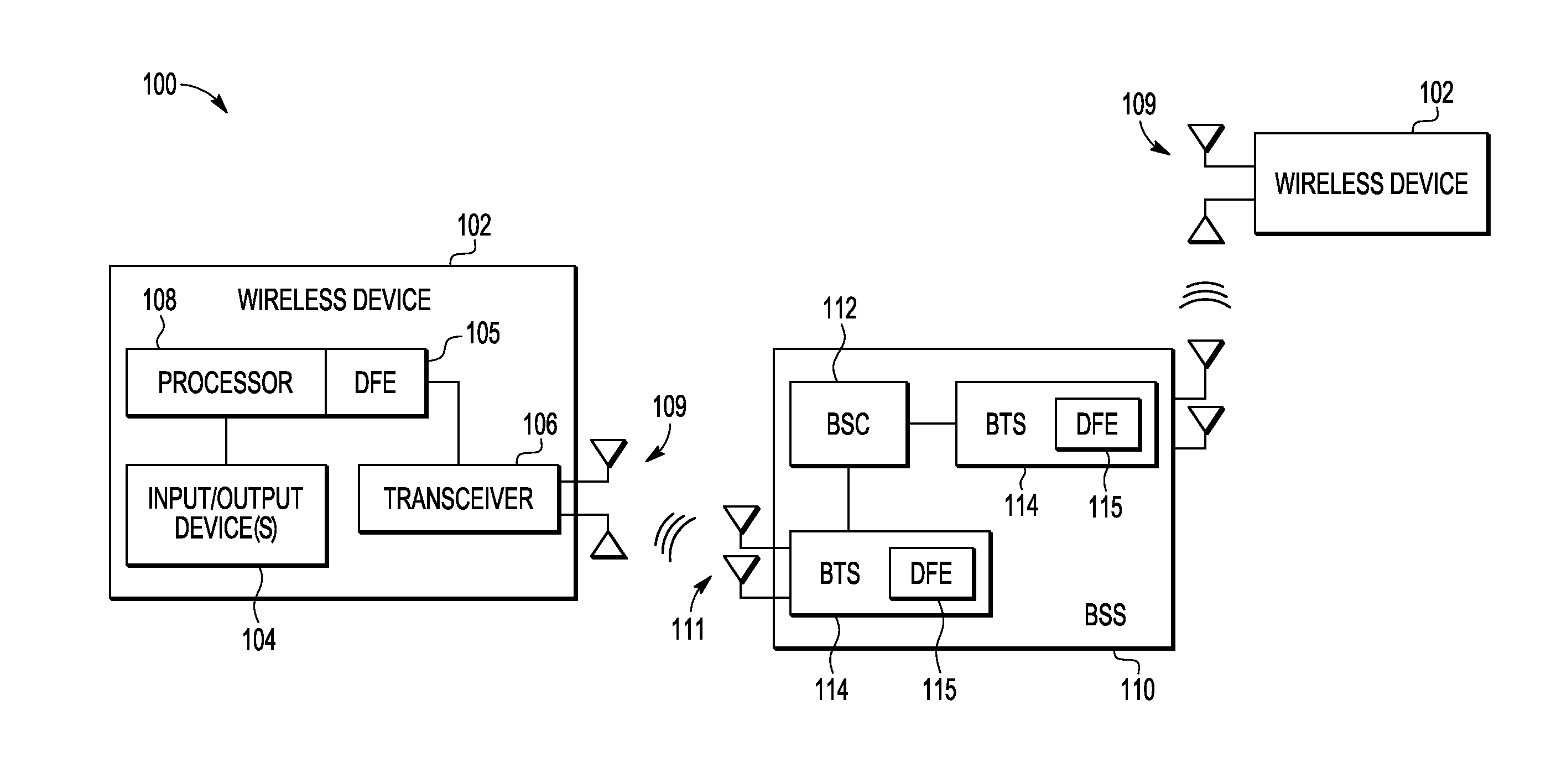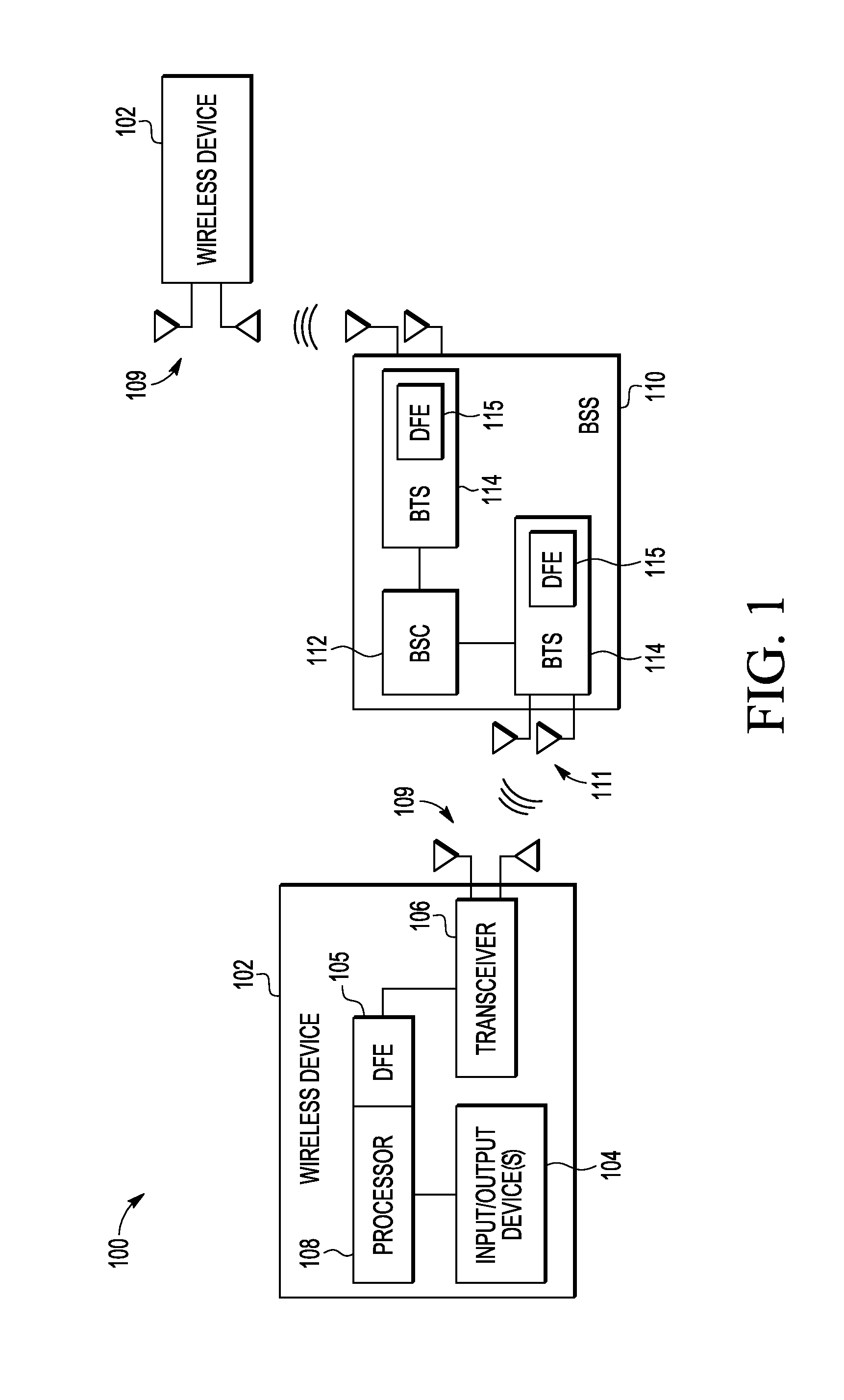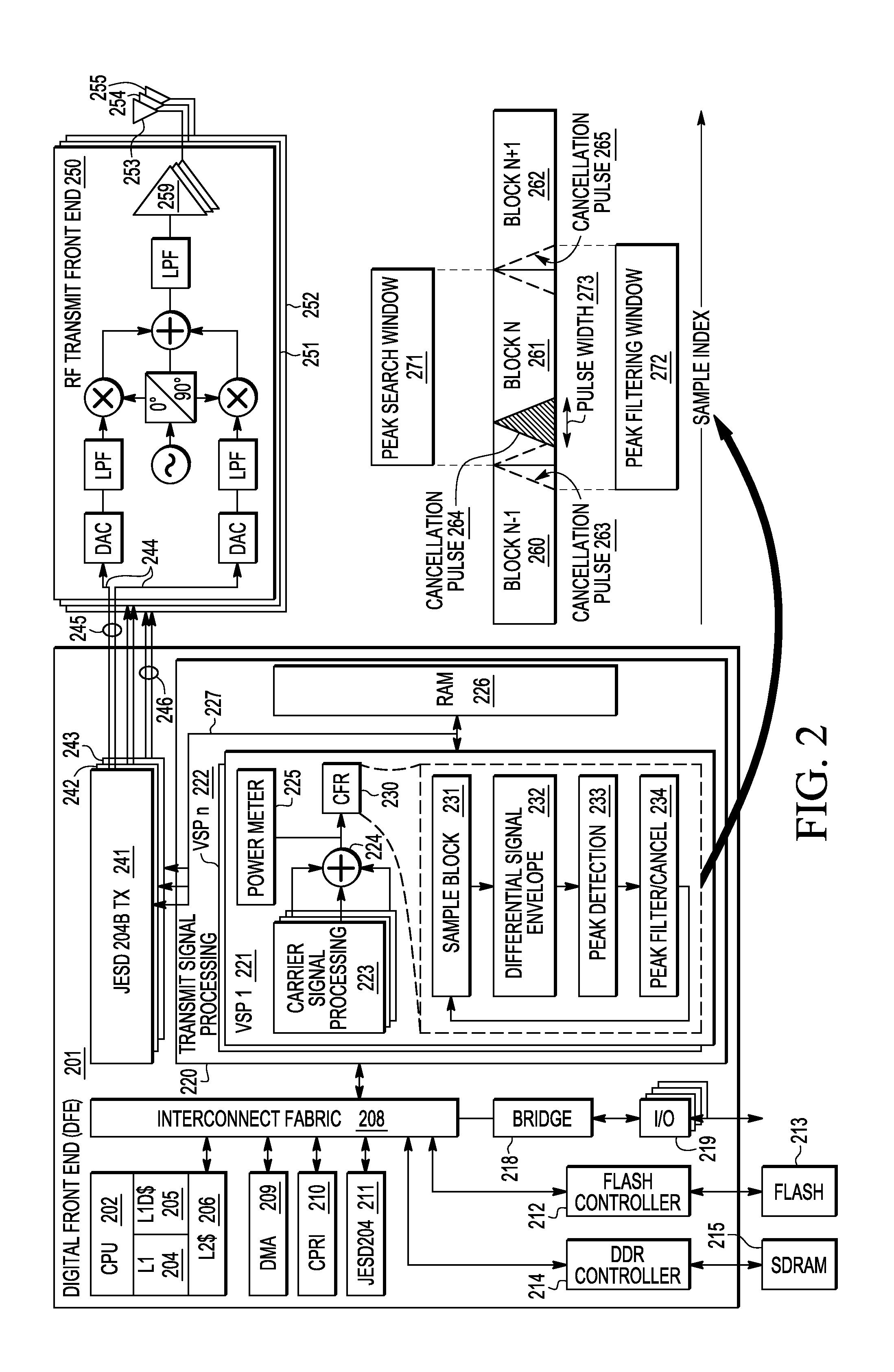Block-Based Crest Factor Reduction
a block-based, crest factor-based technology, applied in the direction of secret communication, digital transmission, baseband system details, etc., can solve the problems of imposing significant complexity and costs, adversely constraining the performance of high-power amplifiers used to amplify multi-carrier signals for transmission, and high-power amplifiers can be very expensive and inefficient parts of base stations
- Summary
- Abstract
- Description
- Claims
- Application Information
AI Technical Summary
Benefits of technology
Problems solved by technology
Method used
Image
Examples
Embodiment Construction
[0013]A system, apparatus, and methodology are described for performing crest factor reduction (CFR) with a non-sequential, non-real time process that collects a block of input IQ samples from a composite carrier, detects all peaks in the signal envelope above a threshold within the block, and selectively cancels or suppresses one or more peaks within a cancellation window that includes the block of input IQ samples. In selected embodiments, a single chip digital front end processor at a base station performs crest factor reduction on a composite multi-carrier waveform by using a peak search window to search a collected block of input samples and detect all peaks above a threshold within the peak search window. Selected peaks within a first peak search window may be canceled by applying a cancellation waveform of differential values to input samples within the first peak search window. In cases where the cancellation waveform overlaps with samples in an adjacent peak search window, ...
PUM
 Login to View More
Login to View More Abstract
Description
Claims
Application Information
 Login to View More
Login to View More - R&D
- Intellectual Property
- Life Sciences
- Materials
- Tech Scout
- Unparalleled Data Quality
- Higher Quality Content
- 60% Fewer Hallucinations
Browse by: Latest US Patents, China's latest patents, Technical Efficacy Thesaurus, Application Domain, Technology Topic, Popular Technical Reports.
© 2025 PatSnap. All rights reserved.Legal|Privacy policy|Modern Slavery Act Transparency Statement|Sitemap|About US| Contact US: help@patsnap.com



